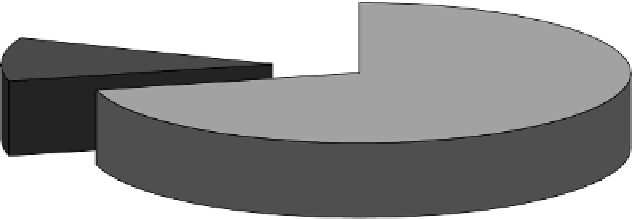Environmental Engineering Reference
In-Depth Information
Wholesale and Retail
Trades, Hotels and
Catering Services
2%
Agriculture, Forestry,
Animal Husbandry
and Fishery
3%
Transport, Storage
and Post
8%
Construction
2%
Others
4%
Household
Consumption
10%
Industry
71%
Fig.11.8.
China energy consumption structure among different socio-economic sectors
Table 11.4.
Comparison of energy consumption per GDP in China with some other se-
lected developed countries (ton of oil equivalent per 10,000 US$) (source: NBSC 2008b)
Country or Area
1990
2000
2001
2002
2003
2004
China
24.43
9.37
8.46
8.34
8.42
8.33
Australia
2.74
2.76
2.85
2.63
2.08
1.77
Canada
3.65
3.50
3.49
3.45
3.07
2.75
France
1.83
1.94
1.99
1.83
1.51
1.34
Germany
2.09
1.81
1.87
1.71
1.42
1.27
Japan
1.48
1.14
1.27
1.34
1.22
1.16
New Zealand
3.13
3.29
3.32
2.93
2.14
1.79
United Kingdom
2.14
1.61
1.63
1.45
1.29
1.10
United States
3.35
2.36
2.24
2.20
2.09
1.99
World
3.95
3.12
3.16
3.10
2.85
2.65
c) Others
Within the Policy context, economic policies and economic successes are consid-
ered key evaluation criteria by most Chinese political and administrative officials.
Under this policy paradigm, GDP growth is the most important factor; but energy
consumption efficiency and environmental protection are usually neglected in
many regions. Light punishment for infringement of law; and inadequate regula-






Search WWH ::

Custom Search